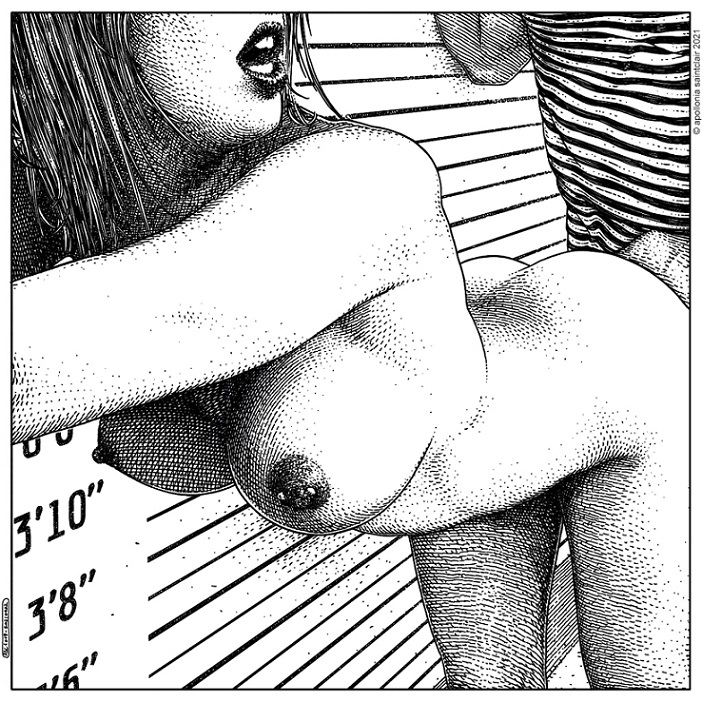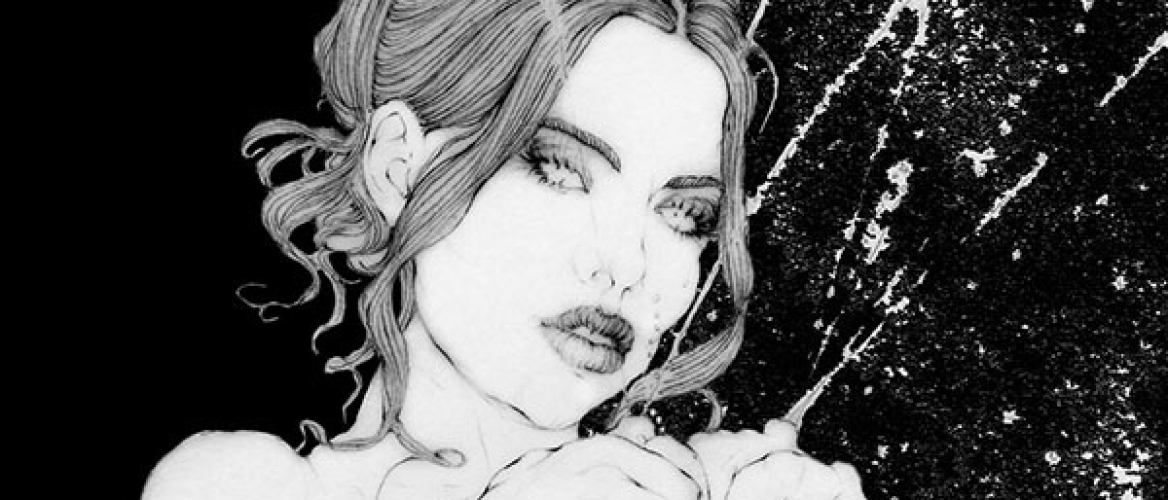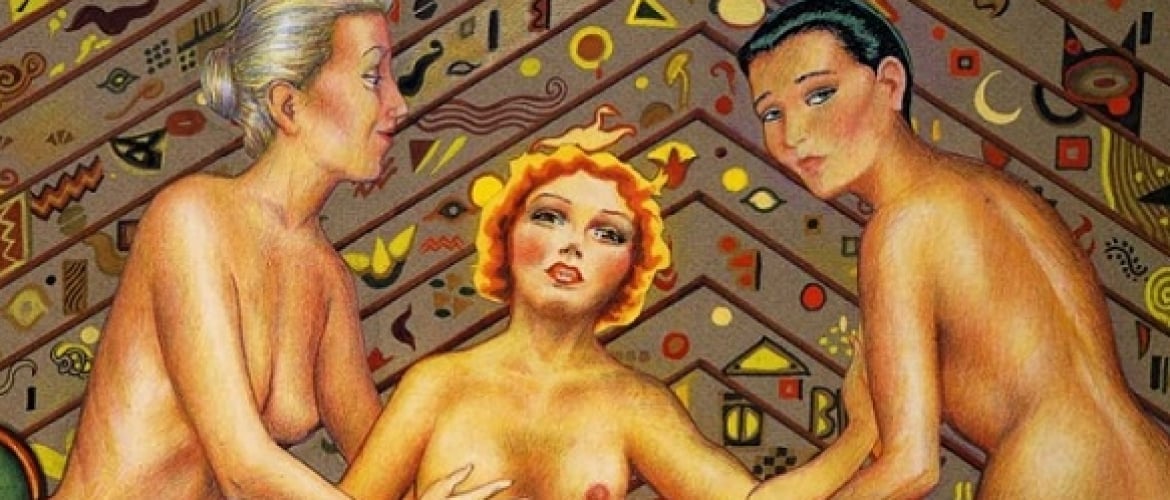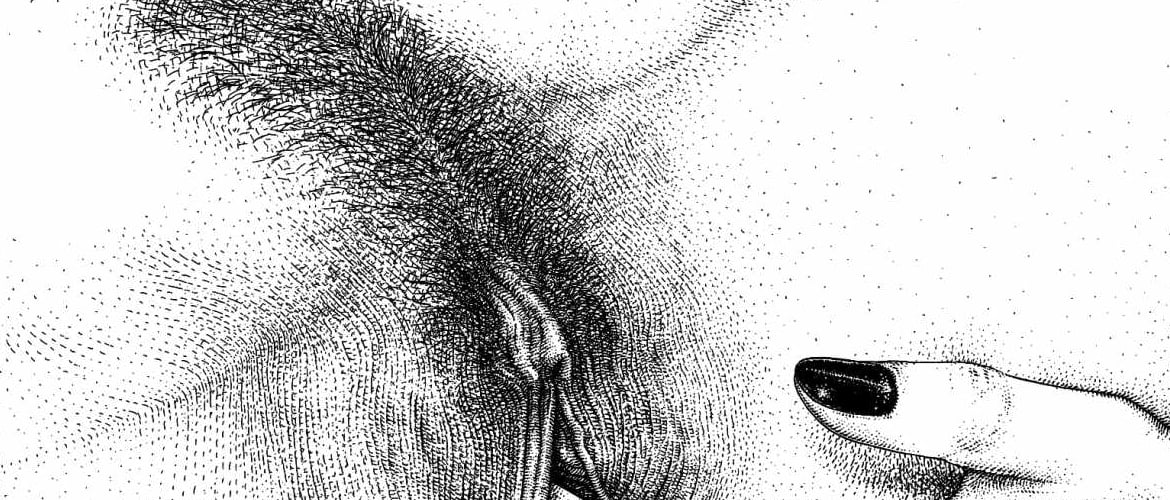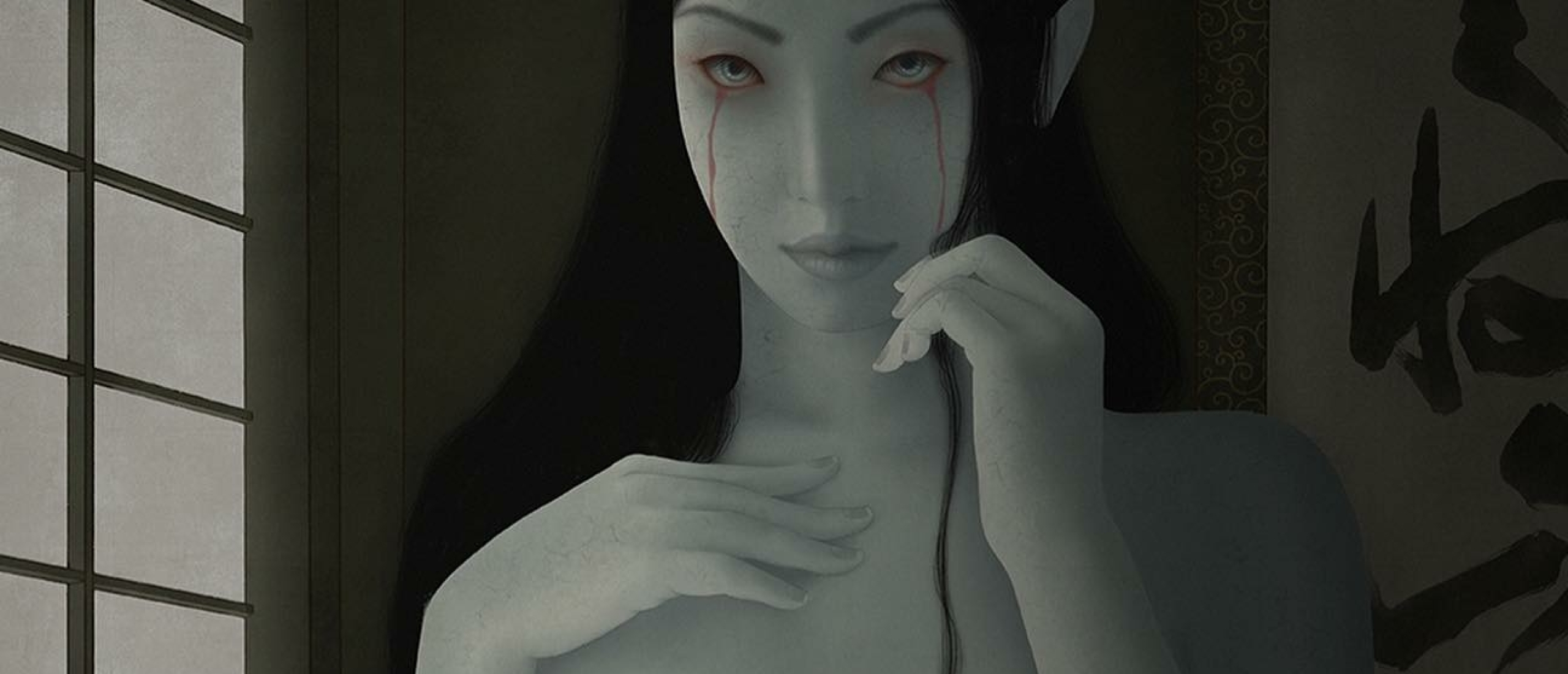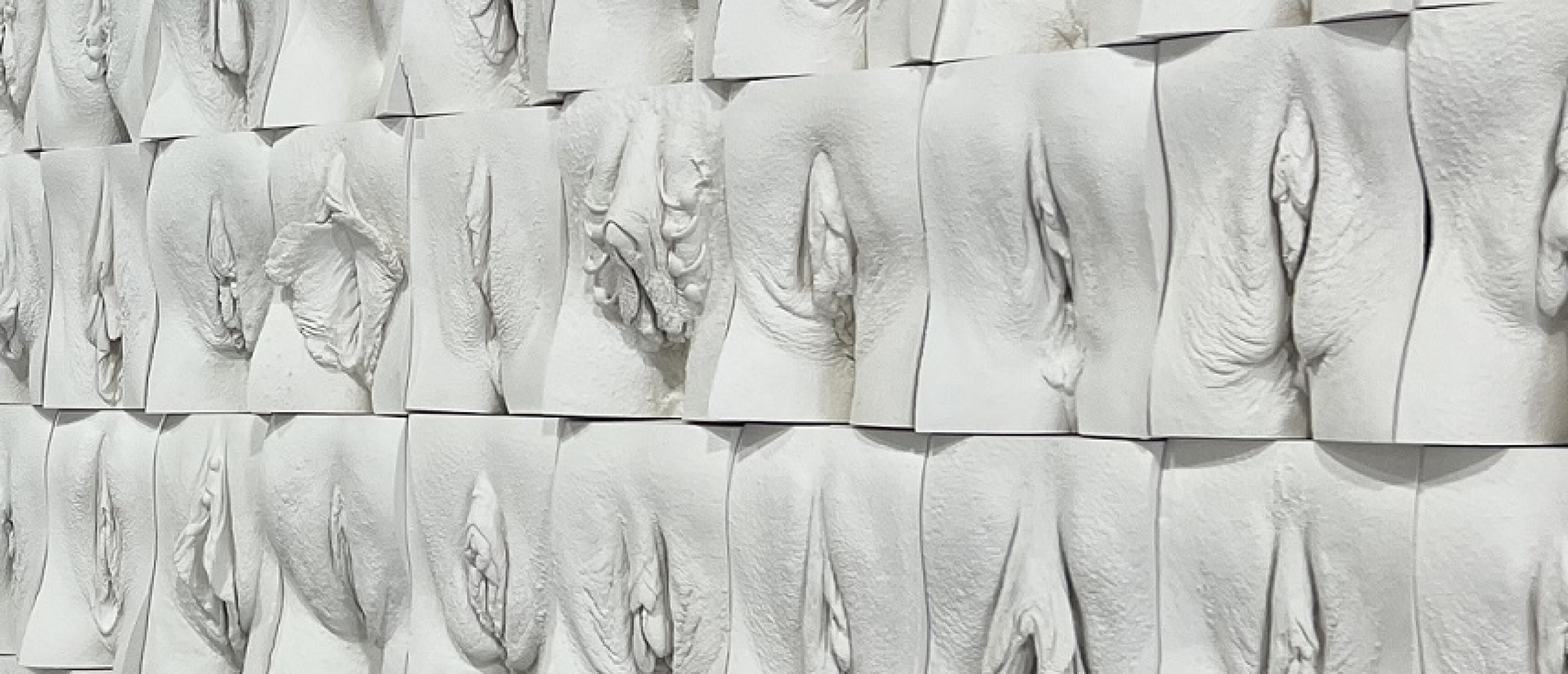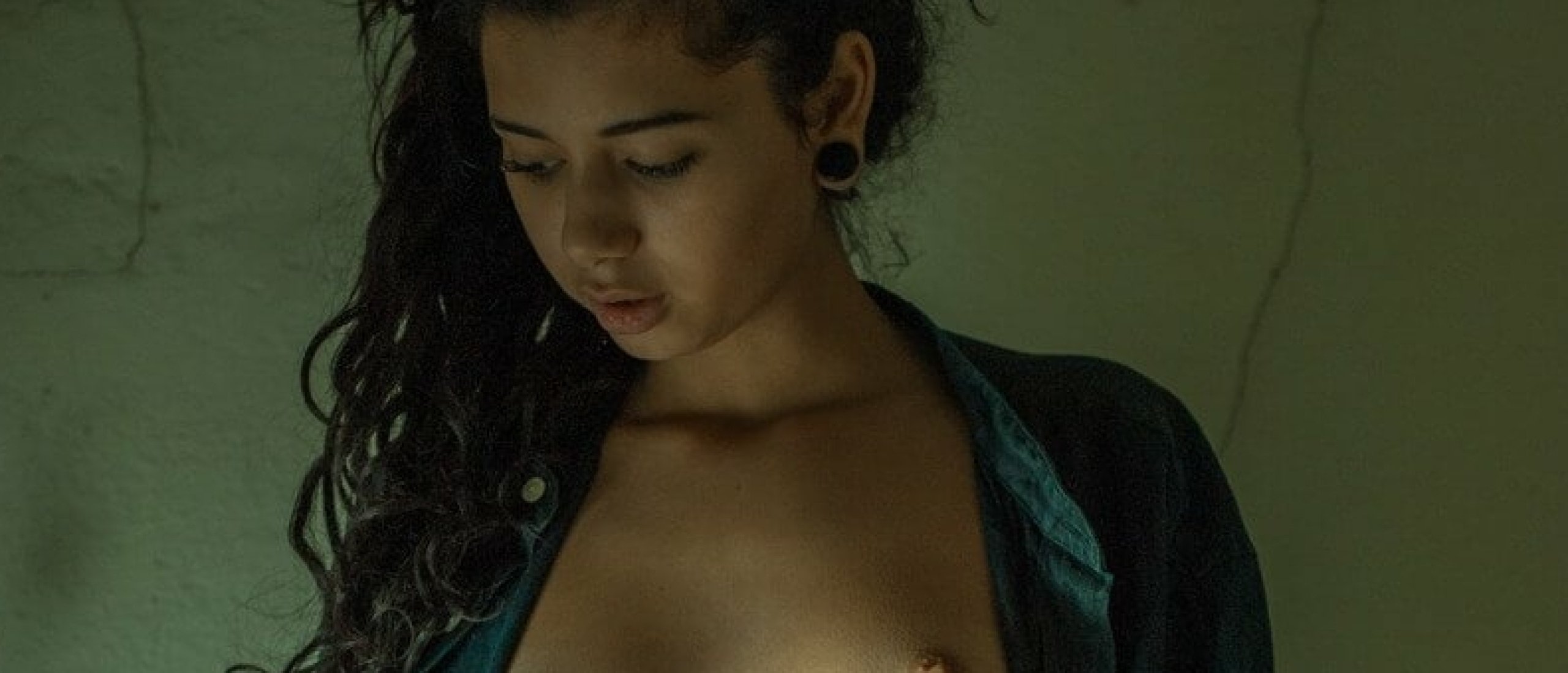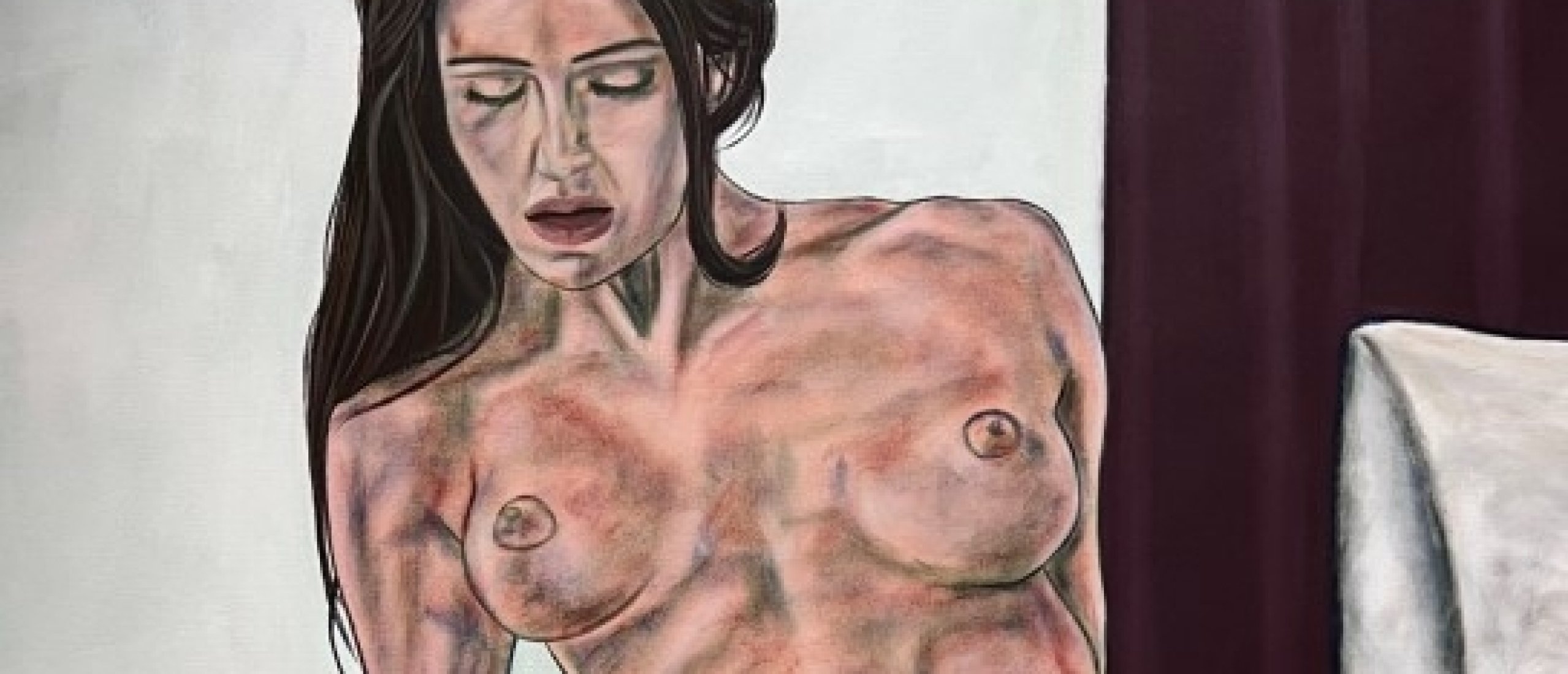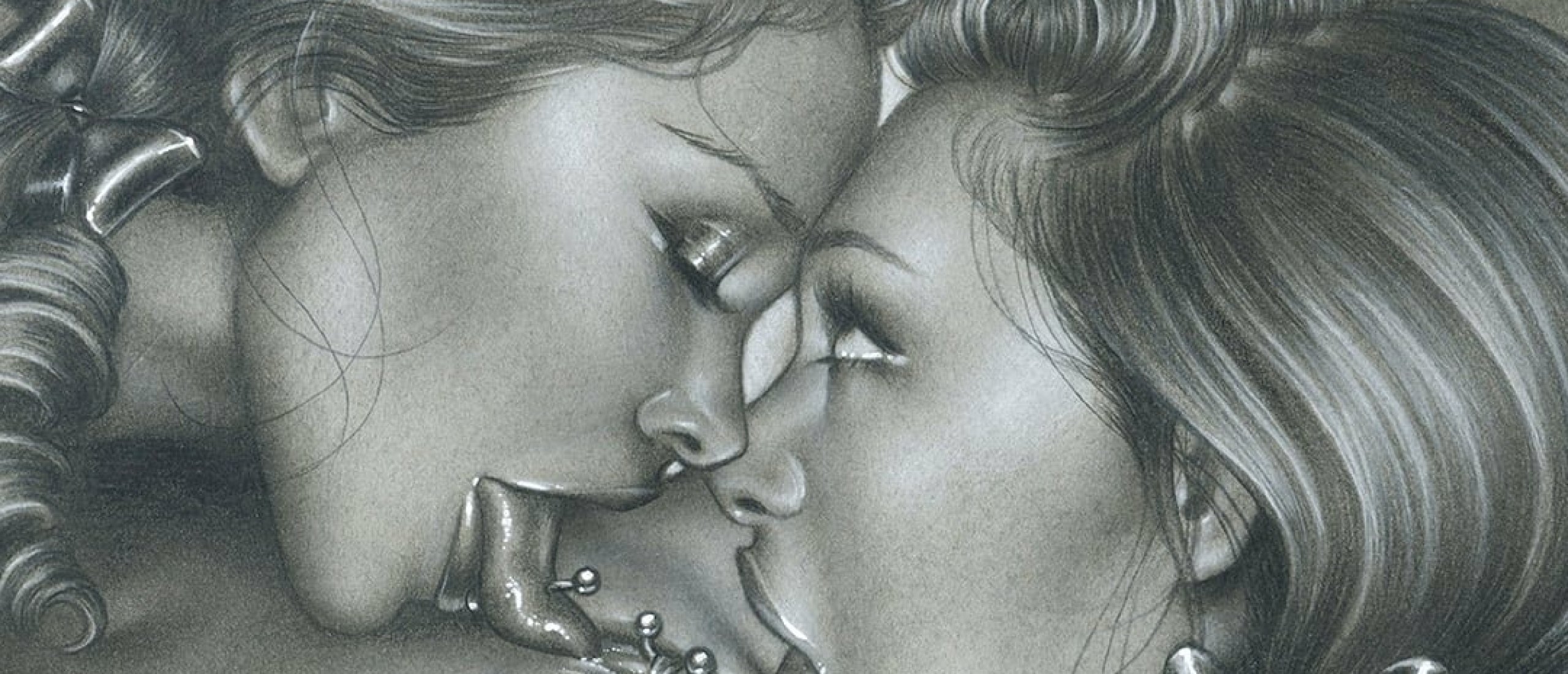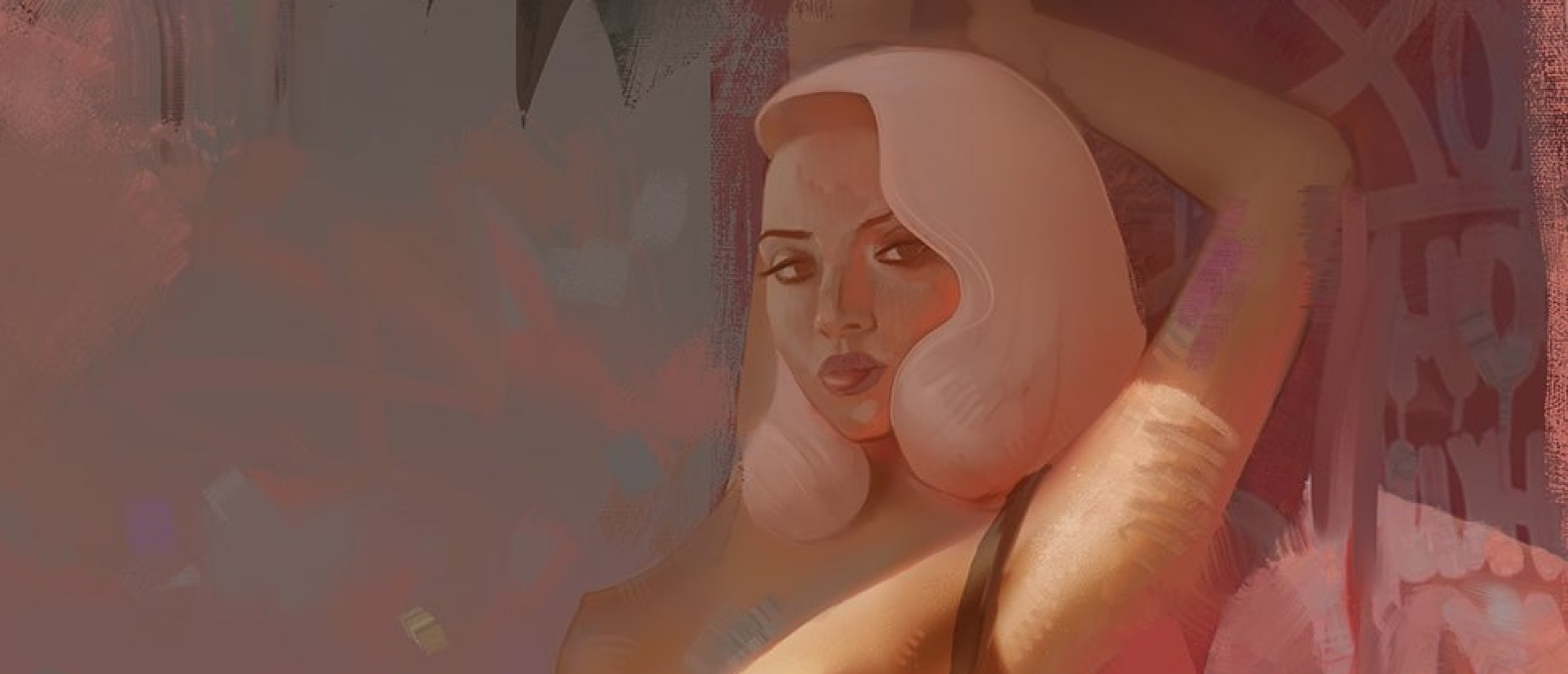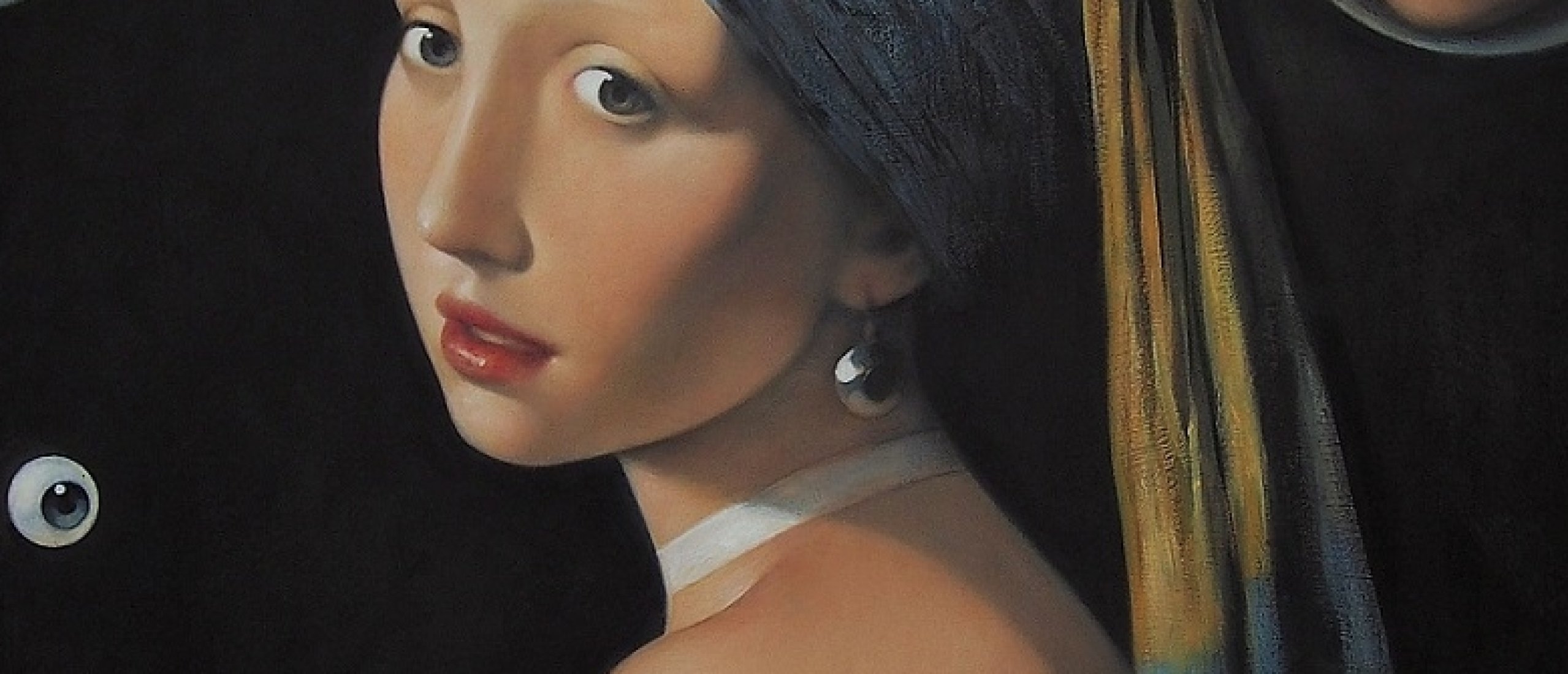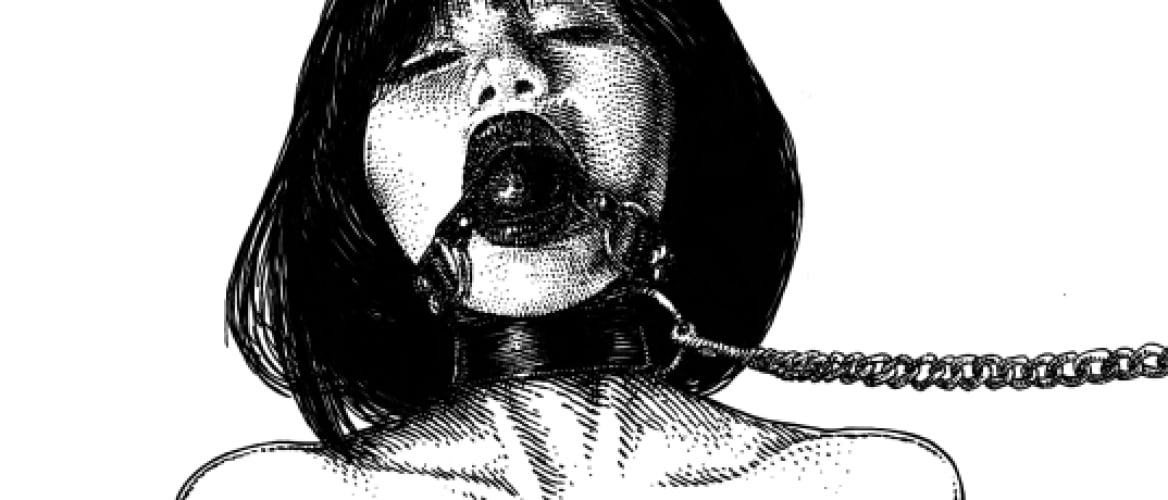
Ever since she has been visually asserting herself on the world wide web from 2013, the mysterious artist Apollonia Saintclair is one of the most anticipated European artists working within sensual art at the moment. This means she is in high demand and her time is limited, which is why we are honored that she took the time for Shunga Gallery to delve deeply into her working method, influences, censorship and much more. For example, what is her fascination with the octopus and the work of H.P. Lovecraft?
1) What does your work process look like? Do you work with live models or photos? You’ve always worked digitally?
Apollona Saintclair: I usually work with a blend of imagination and photographic references, more rarely with a live model. Each drawing is a continued process, from sketch to ink, which only ends when I put the date and choose a final title. I hardly ever start a new work until I consider the one I’m working on complete; that’s why I also hate having to – usually for commissions – go back to a finished drawing, even though I see potential for improvement. Because indeed the breath that carried my work, the force of the moment, is extinguished and I believe we see the retouching. I prefer a drawing to be imperfect, but authentically encapsulate what I was trying to do at this point in time, with all the subtext, all the unsaid and intuitive things that guided my pen. It is impossible to reproduce this nexus without introducing a dose of artificiality and superficiality. As it is very difficult to have visual continuity in the grey values if I interrupt my work.
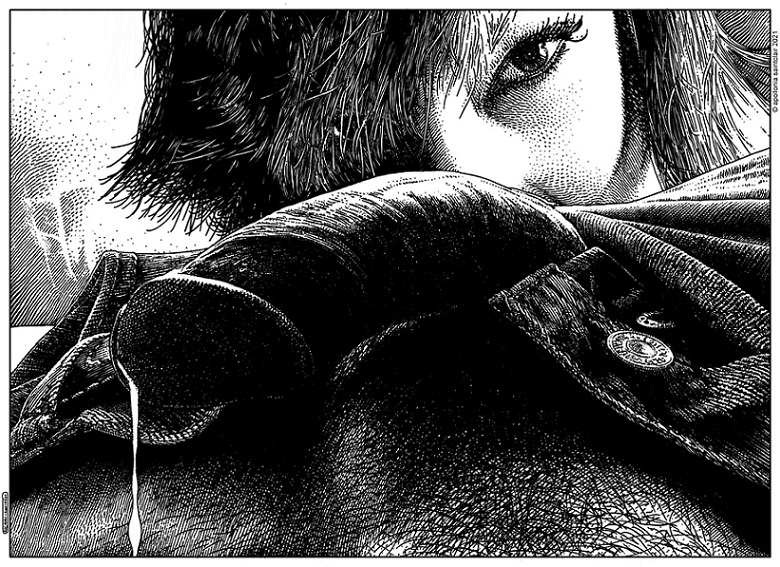
Fig.1. ‘The Predator’s Gaze‘ (2021)
Originally, I worked in analogue, but when I discovered its potential, I practically went digital all the time. The great strength and the great danger of digital lies in its fractal aspect: it makes it possible to work on very fine details, to zoom in, but at the same time it requires an additional discipline to always keep the overview and not to get lost. At the end of the day, I continue to draw on instinct, almost blind, because the effect of a hatch is very different at close range or at a distance.
2) Does your work arise intellectually or intuitively? And how would you describe this process?
AS: For me to start a drawing, I need a spark: that I see, as in palimpsest, what an image could become and that I intuitively understand what stories it could tell. One of the directions is purely graphic: what does the arrangement of forms and values tell me? Is it powerful, eye-catching or subtle? The other is atmospheric: in what world, in what time am I? What “rings” true and where is it taking me? Finally, there is the purely narrative dimension: what’s going on? What happened before and what will happen soon after or much later? Each drawing is the search for an adequacy or a maximum tension between these different aspects, so that they merge into something seductive and elusive at the same time.
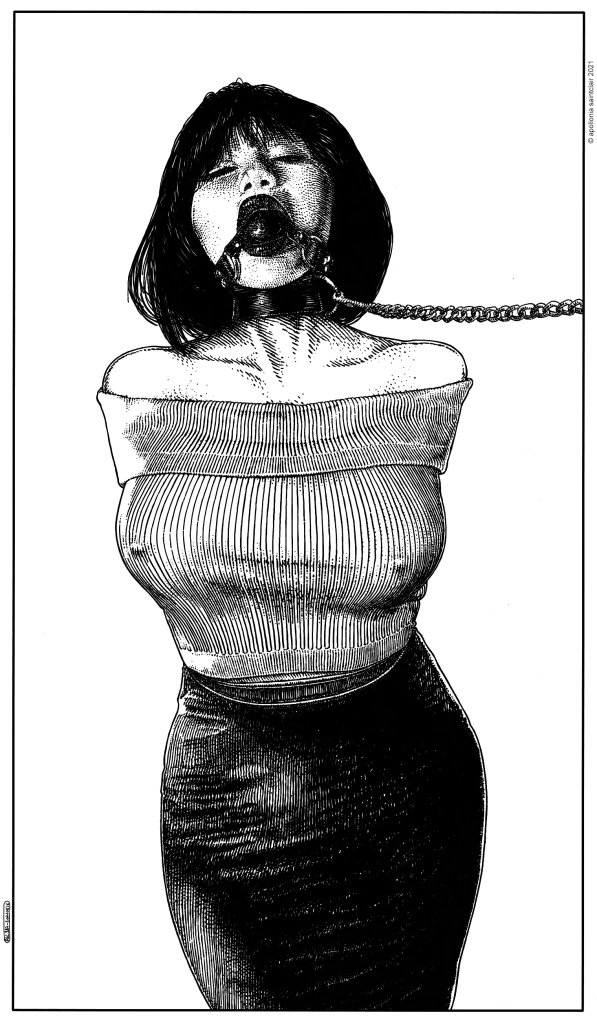
Fig.2. ‘Les côtelures (Fresh tracks on a snowy slope)‘ (2021)
3) Why do you choose to mainly use black and white in your work?
AS: It’s not really a choice, but more of a twist … Because I rarely feel the need to add colour, except to create a specific accent. The truth is that whatever I try, I always come back to black and white – then absence always seems stronger to me than presence: it asks the audience to imagine what is missing, to be part of the picture. Kind of like H.P. Lovecraft’s “The Colour Out of Space” that no one could paint, but only imagine. I love the ambivalence of twilight, when colours fade, because this is the moment when perception begins to freewheel, when you see or believe you see the images of your fears and desires, projected by your brain, on this indefinite canvas. Black and white, by its operation of reducing reality, has that similar effect of amplifying imagination.
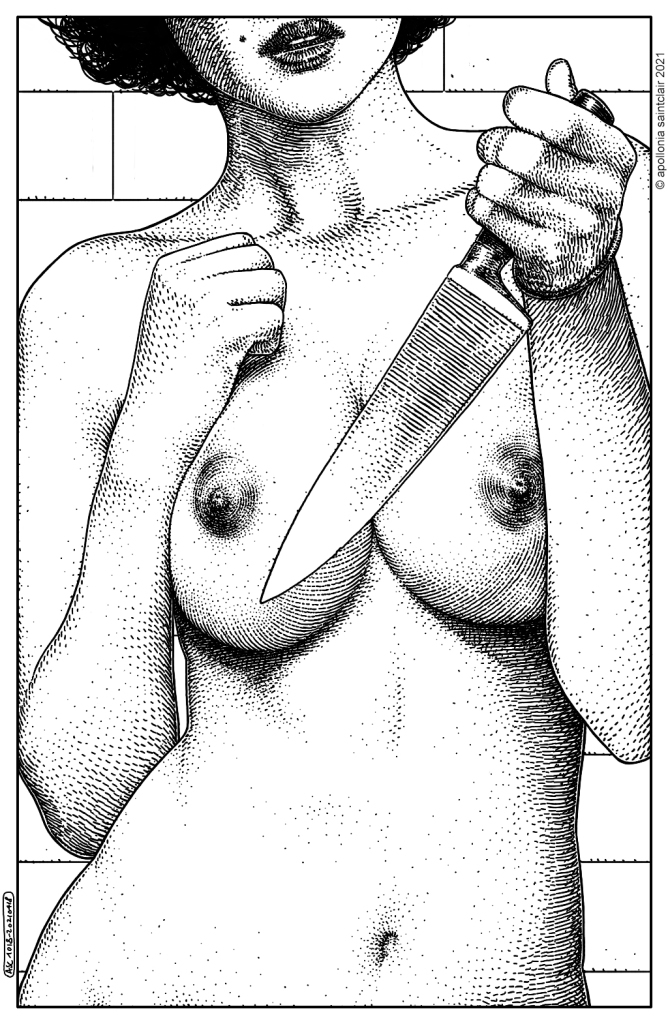
Fig.3. ‘Le poignard dans le gâteau (In my kitchen)‘ (2021)
4) What would you consider to be the main theme in your work?
AS: I think we should rather ask an art critic to get a meaningful answer… Then I honestly don’t know, since I don’t draw according to a thematic agenda. I mainly follow my desires and I notice afterward that there are echoes between certain drawings, which speak to each other and seem to revolve around recurring topics or situations. I guess one of the commonalities is that women often seem to be the active ingredient in the stories I tell. But this is also probably a reductive interpretation, because in fact all the protagonists are mainly there because they seem to have chosen a role and behave accordingly. I believe that there are very few drawings where the protagonists are not intensely present, intensely aware, intensely decided ….
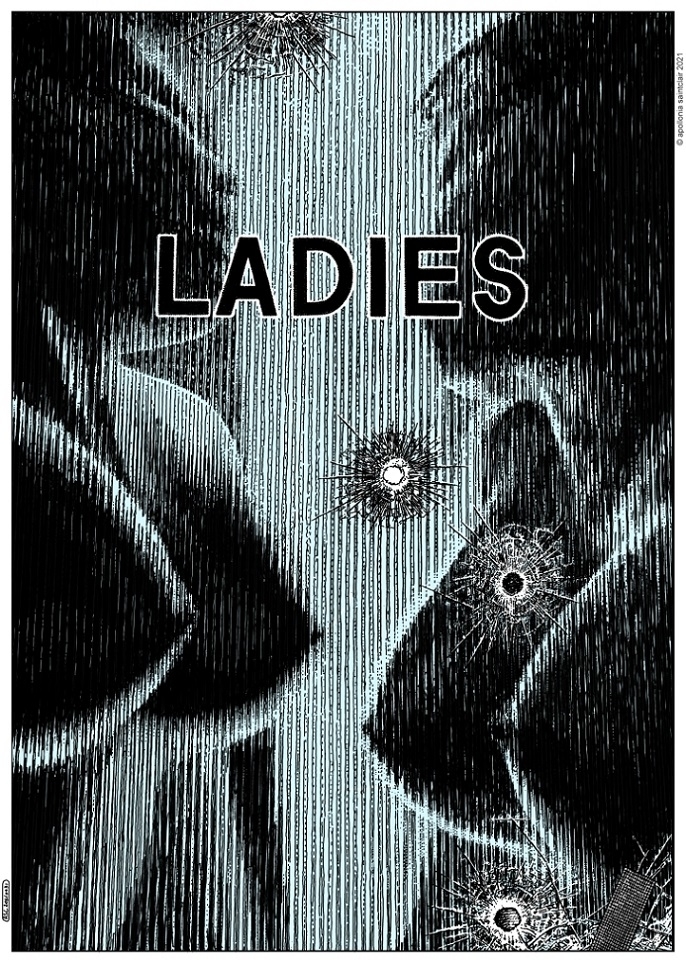
Fig.4. ‘L’entre-nous (Between women)‘ (2021)
5) Do some of your works matter more to you than others?
AS: Yes, of course, but these are certainly different works than those most appreciated by the public: these are the drawings that were real challenges, which, perhaps without being the most liked, are those where I had the impression of progressing the most. Because there is no rest, each drawing is a new test, and some works are personally particularly satisfying because the bar was set very high.
